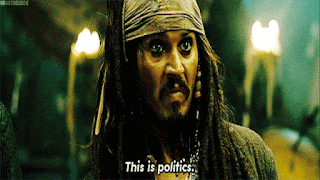News: The Political landscape of Britain
Study on Political Parties for the upcoming analysation on the political motivations of newspapers in Britain
Current state in Parliament (General election 8th June 2017): Theresa May is Prime Minister, The Conservatives have lost their majority, but remain the largest party in the House of Commons.
'There is just one round of voting, and the candidate with the most votes wins. That's it. Thus, if there are ten candidates standing for a seat, candidates A to J, and candidates B to J each get 9.95 % of the vote, 0.4% of the votes are invalid, and candidate A gets 10% of the vote, candidate A is elected. There is no runoff.
Though 10% of the vote is a small minority, it is more than any other candidate, and is thus described as a relative majority , or as a "plurality" in American English.'
History of the Parties
It was not until after approximately 1950 that the first English political parties began to take shape. During the years from 1678 to 1681, and the constitutional crisis known as the Exclusion Crisis, most members of the English parliament formed into two "parties", named Whigs and Tories.
Initially, the Whigs were the party of the liberal and reforming aristocracy. In contrast to the Tories, the Whig Party attracted people more favorable to constitutional reforms, and in 1832 led the most significant modernisation of the British Parliament, the Reform Act, which rebalanced parliamentary constituencies, and greatly expanded the electoral base to the middle classes. In the 1850's, the Whig Party became the most important element of a union of Whigs and Radicals who took the name "Liberal Party". This centrist party continued until 1988, when it merged with the new but smaller Social Democratic Party to form today's Liberal Democrats.
The word Tory designated early supporters of strong royal power; Tories were monarchists and traditionalists, especially at the time of the Restoration of the monarchy in 1660. During the eighteenth century, the Whigs dominated British politics, and the Tory party played a relatively small role in the political life of the United Kingdom. During the 19th century - as today - the Tory party, which became the Conservative Party in 1834, was torn between its traditionalists and its reformers.
After the First World War, a new party came to power in the British Parliament, the Labour Party.
Conservative party
The conservative party is the right wing party with a broad range of conservatives and royalists, neo-liberals and social conservatives. The Conservative Party is made up of local Associations which play a major role in the selection of candidates and the appointment of the party leader.
UKIP
The UK Independence Party is a sovereignist party that wants Britain to withdraw from the European Union. In 2016, UKIP provided the foot-soldiers of the campaign to take Britain out of the European Union; but the non-UKIP part of the Leave campaign has sought to distance itself from UKIP since the referendum, worried at the damage that UKIP's xenophobic campaigning has done to Britain.
BNP
The British National Party is an extreme right-wing party with nationalistic and xenophobic views.
The Liberal Democrat party
A party of the centre, formed in 1988 by the merger of the Liberal Party and the Social Democratic Party (SPD) , the latter being made up of dissidents from the Labour party. The Lib Dems are thus a mixture of social conservatives and social democrats.
The Green Party
A centre-left party, in many ways rather middle-class, committed to the promotion of environmental issues.
The Labour Party
The Labour party covers virtually the whole spectrum of left wing politics in Britain, and includes a smaller party known as the Co-operative party. Until 2010, since the time of Tony Blair, it had been dominated by the social-liberal centre-left. It remained essentially a centre-left party; but in September 2015, with the election to the leadership of a left-winger Jeremy Corbyn, the Labour party has moved into a new period in its history.
The Communist Party of Great Britain
Very marginal, the party has only ever had two elected MPs. It was never a mass party, not even when at its peak in the 1940's.
SNP - Scottish Nationalist Party
Currently the most important political party in Scotland, and the party in power in the Scottish Parliament . A left-of-centre nationalist party, that organized a referendum on Scottish independence in autumn 2014.
Plaid Cymru - Welsh nationalist party
Major Welsh party, which did control the Welsh Assembly, but is now on a par with the Labour Party, which is also very well established in this part of the United Kingdom.
Current state in Parliament (General election 8th June 2017): Theresa May is Prime Minister, The Conservatives have lost their majority, but remain the largest party in the House of Commons.
'There is just one round of voting, and the candidate with the most votes wins. That's it. Thus, if there are ten candidates standing for a seat, candidates A to J, and candidates B to J each get 9.95 % of the vote, 0.4% of the votes are invalid, and candidate A gets 10% of the vote, candidate A is elected. There is no runoff.
Though 10% of the vote is a small minority, it is more than any other candidate, and is thus described as a relative majority , or as a "plurality" in American English.'
History of the Parties
It was not until after approximately 1950 that the first English political parties began to take shape. During the years from 1678 to 1681, and the constitutional crisis known as the Exclusion Crisis, most members of the English parliament formed into two "parties", named Whigs and Tories.
Initially, the Whigs were the party of the liberal and reforming aristocracy. In contrast to the Tories, the Whig Party attracted people more favorable to constitutional reforms, and in 1832 led the most significant modernisation of the British Parliament, the Reform Act, which rebalanced parliamentary constituencies, and greatly expanded the electoral base to the middle classes. In the 1850's, the Whig Party became the most important element of a union of Whigs and Radicals who took the name "Liberal Party". This centrist party continued until 1988, when it merged with the new but smaller Social Democratic Party to form today's Liberal Democrats.
The word Tory designated early supporters of strong royal power; Tories were monarchists and traditionalists, especially at the time of the Restoration of the monarchy in 1660. During the eighteenth century, the Whigs dominated British politics, and the Tory party played a relatively small role in the political life of the United Kingdom. During the 19th century - as today - the Tory party, which became the Conservative Party in 1834, was torn between its traditionalists and its reformers.
After the First World War, a new party came to power in the British Parliament, the Labour Party.
Conservative party
The conservative party is the right wing party with a broad range of conservatives and royalists, neo-liberals and social conservatives. The Conservative Party is made up of local Associations which play a major role in the selection of candidates and the appointment of the party leader.
UKIP
The UK Independence Party is a sovereignist party that wants Britain to withdraw from the European Union. In 2016, UKIP provided the foot-soldiers of the campaign to take Britain out of the European Union; but the non-UKIP part of the Leave campaign has sought to distance itself from UKIP since the referendum, worried at the damage that UKIP's xenophobic campaigning has done to Britain.
BNP
The British National Party is an extreme right-wing party with nationalistic and xenophobic views.
The Liberal Democrat party
A party of the centre, formed in 1988 by the merger of the Liberal Party and the Social Democratic Party (SPD) , the latter being made up of dissidents from the Labour party. The Lib Dems are thus a mixture of social conservatives and social democrats.
The Green Party
A centre-left party, in many ways rather middle-class, committed to the promotion of environmental issues.
The Labour Party
The Labour party covers virtually the whole spectrum of left wing politics in Britain, and includes a smaller party known as the Co-operative party. Until 2010, since the time of Tony Blair, it had been dominated by the social-liberal centre-left. It remained essentially a centre-left party; but in September 2015, with the election to the leadership of a left-winger Jeremy Corbyn, the Labour party has moved into a new period in its history.
The Communist Party of Great Britain
Very marginal, the party has only ever had two elected MPs. It was never a mass party, not even when at its peak in the 1940's.
SNP - Scottish Nationalist Party
Currently the most important political party in Scotland, and the party in power in the Scottish Parliament . A left-of-centre nationalist party, that organized a referendum on Scottish independence in autumn 2014.
Plaid Cymru - Welsh nationalist party
Major Welsh party, which did control the Welsh Assembly, but is now on a par with the Labour Party, which is also very well established in this part of the United Kingdom.



Comments
Post a Comment